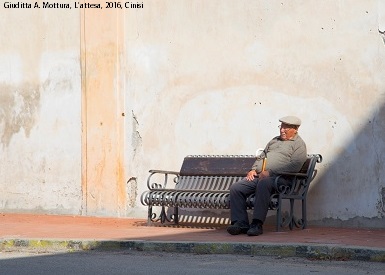When a Party Paper Meets COVID-19: Crisis and Legitimacy in Renmin Ribao’s Commentary Articles
DOI:
https://doi.org/10.54103/2035-7680/19122Parole chiave:
Frame analysis; Chinese media; journalistic genres; News commentary; People’s Daily; Covid-19Abstract
Similar to many other countries, journalistic production in China during the first half of 2020 was dominated on a thematic level by the COVID-19 pandemic. The trend included the mouthpiece of the Central Committee of the Chinese Communist Party (CCP), Renmin Ribao. Its news and commentary articles, which are widely republished by other media, influence the country’s political life, and contribute to the process of meaning generation in the news discourse and to the CCP’s effort to align Chinese citizens to official narratives. Renmin Ribao can therefore provide a relevant source to investigate the relationship between political power and the COVID-19 pandemic, starting from the hypothesis that the paper’s narrative would aim at discursively turning the international health crisis into a piece of positive propaganda. This study aims to verify whether and how the paper did so, and to question the assumption that the outlet’s media discourse can be equated to the CCP official discourse.
The research is developed as a case study and blends quantitative and qualitative tools grounded on Applied Linguistics, Discourse-Historical Approach, and Frame Analysis, in order to analyse a corpus of commentaries that have appeared in the outlet’s online edition in 2020. By applying a Genre Analysis approach, the study also offers insights into the possibility to identify distinguishing characteristics and communicative goals in the different sub-genres of Renmin Ribao commentaries.
Metriche
Riferimenti bibliografici
Anthony, Lawrence. SegmentAnt (Version 1.1.3) [Computer Software]. Waseda University, 2017.
---. AntConc (Version 4.0.2) [Computer Software]. Waseda University, 2021.
Bhatia, Vijay K. Critical Genre Analysis. Investigating interdiscursive performance in professional practice. Routledge, 2017.
Cheng Dong (陈栋). “我国新时评的发展历史与现况分析” (History of the Development of Commentary on Current Affairs and Analysis of the Contemporary Situation). Jinchuanmei, 2008.
China Daily. “White paper - Fighting Covid-19: China in Action,” 8 Jun. 2020. covid-19.chinadaily.com.cn/a/202006/08/WS5edd8bd6a3108348172515ec.html. Accessed 1 Sept. 2022.
China Keywords (中国关键词). keywords.china.org.cn. Accessed 1 Sept. 2022.
Cui Weihang (崔唯航). “必须不断推动构建人类命运共同体” (We have to continuously promote the construction of a community of shared future). Qiushi, 10 May 2021, www.qstheory.cn/qshyjx/2021-08/25/c_1127793473.htm. Accessed 1 Sept. 2022.
de Burgh, Hugo. China’s Media in the Emerging World Order. University of Buckingham Press, 2017.
Ding Fazhang (丁法章). “新闻时评的复兴及其他” (The Renaissance of Commentary on Current Affairs and Other Writings). Xinwen Jizhe, no. 4, 2019, pp. 26-28.
Durant, Alain. “The significance is in the selection: identifying contemporary keywords.” Critical Quarterly, no. 50, 2008, pp. 122-142.
Entman, Robert M. “Framing: Toward clarification of a fractured paradigm.” Journal of Communication, no. 43, 1993, pp. 51–58.
Gitter, David, and Leah Fang. “The Chinese Communist Party’s Use of Homophonous Pen Names: An Open-source Open Secret.” Asia Policy, no. 1, 2018, pp. 69-112.
Gongyang Wangjun (公羊王均). 自由撰稿人。文化圈里的“野生动物” (Independent Editorial Contributor. The ‘Wild Animal’ of Cultural Circles). Dongfang Chuban Zhongxin, 2008.
Guan Kai. “People’s War.” Afterlives of Chinese Communism, edited by Christian Sorace, Ivan Franceschini, and Nicholas Loubere, Verso Books/ANU Press, 2019, pp. 175-180.
Ji Feiyuan. Linguistic Engineering. Language and Politics in Mao’s China. University of Hawai’i Press, 2004.
Jones, Rodney H. Viral Discourse (Elements in Applied Linguistics). Cambridge UP, 2021.
Lemus-Delgado, Daniel. “China and the battle to win the scientific narrative about the origin of COVID-19.” JCOM, no. 19, 2020.
Li Fabao (李法宝). 新闻评论。发现于表现 (News commentary. Aspect and expression). Zhongshan Daxue Chubanshe, 2003.
Li Tianhe (李天贺). “以人为本”奏响抗震救灾的时代强音 (“Putting people first” plays a powerful voice in the era of earthquake and disaster relief), Journal of Liaoning Institute of Socialism, no. 3, 2008, pp. 8-10.
Li Zhongjie (李忠杰). 改革开放关键词 中国改革开放历史通览 (Keywords of Reform and Opening Up: A Brief History of China’s Reform and Opening Up). Renmin chubanshe, 2018.
Liao Guanglian (廖广莲). 新闻通讯传媒写作技巧与范冽 (Writing Techniques and Models for the Media). Beijing Lianhe Chuban Gongsi, 2017.
Link, Perry. Anatomy of Chinese. Rhythm, Metaphor, Politics. Harvard UP, 2013.
Lu Xie. Rhetoric of the Chinese Cultural Revolution. The impact on Chinese Thought, Culture and Communication. University of South Carolina Press, 2004.
Lupano, Emma. “Freelancers or ‘Public intellectuals’? Professional Identity and Discursive Representation of Chinese Independent Media Writers in a Fast-changing Landscape.” Languages Cultures Mediation, no. 4, 2017, pp. 149-166.
---. “News and Views: Definitions and Characteristics of Genres in Chinese Journalism.” Languages Cultures Mediations, no. 5, 2018, pp. 51-71.
---. “Raccontare lo Sport nella Cina delle Riforme: Modelli Mediatici a Confronto.” Sulla via del Catai, no. 22, 2020, pp. 41-62.
Mao Zedong. Selected Works of Mao Tse-tung. Foreign Languages Press, 1967.
Mi Bohua (米博华). “任仲平的特质和品格” (Nature and Characteristics of Ren Zhongping Commentary). RMRB, 1 Mar. 2009.
Mottura, Bettina. Keywords in Chinese Political Language. Unicopli, 2021.
Qian Gang. “Watchwords. Reading China through its Political Vocabulary.” JMSC Working Papers, 2012.
Reese, Stephen D. “The Framing Project: A Bridging Model for Media Research Revisited.” Journal of Communication 57, 2007, pp. 148–154.
Reuters. “China Ends 2021 with Worst Covid Week since Taming Original Epidemic.” 1 Jan. 2021, www.reuters.com/business/healthcare-pharmaceuticals/chinas-xian-enters-10th-day-covid-lockdown-cases-persist-2022-01-01/. Accessed 1 Sept. 2022.
Schoenals, Michael. Doing Things with Words in Chinese Politics: Five Studies. University of California Press, 1992.
SCIO, 2021, 全文:全面小康:中国人权事业又一里程碑 (Moderate Prosperity in All Respects: Another Milestone Achieved in China’s Human Rights). 12 Aug. 2021, www.scio.gov.cn/zfbps/32832/Document/1710544/1710544.htm. Accessed 1 Sept. 2022.
She Tao (社涛). 新闻评论 (News Commentary). Zhishi Chanquan Chubanshe, 2013.
Semetko, Holli A., and Patti M. Valkenburg. “Framing European Politics: A Content Analysis of Press and Television News.” Journal of Communication, no. 50, 2000, pp. 93-109.
Smith, Craig A. “Datong and Xiaokang.” Afterlives of Chinese Communism, edited by Christian Sorace, Ivan Franceschini, and Nicholas Loubere, Verso Books/ANU Press, 2019, pp. 63-66.
Swales, John M. Genre Analysis: English in Academic and Research Settings. Cambridge UP, 1990.
Tsai Wen-Hsuan and Kao Peng-Hsiang. “Secret Codes of Political Propaganda: The Unknown System of Writing Teams.” China Quarterly, no. 214, 2013, pp. 394-410.
Wang Hailong (王海龙). 报纸上的中国 (Newspapers China). Beijing Daxue Chubanshe, 2004.
Wang, Jessica, Ellie Zhu, and Taylor Umlauf, “How China can build Coronavirus hospitals in just over a week.” The Wall Street Journal, 6 Feb. 2020. www.wsj.com/articles/how-china-can-build-a-coronavirus-hospital-in-10-days-11580397751. Accessed 1 Sept. 2022.
Wang Wei. “Intertextual Aspects of Chinese Newspaper Commentaries on the Events of 9/11.” Discourse Studies, no. 10, 2008, pp. 361-381.
Williams, Raymond. Keywords: A Vocabulary of Culture and Society. Fontana/Croom Helm, 1976.
Wodak, Ruth. “Crisis Communication and crisis management during COVID-19.” Global Discourse, no. 11, 2021, pp. 329-353.
Yang Xinmin (杨新敏). 新闻评论学 (News Commentary). Suzhou Daxue Chubanshe, 2013.
Yang Yifan and Chen Xuechen. “Globalism or Nationalism? The Paradox of Chinese Official Discourse in the Context of the COVID-19 Outbreak.” Journal of Chinese Political Science, no. 25, 2021, pp. 175–198.
Yuan Dongwei (元冬维). 新闻评论协作 (News Commentary Writing). Zhongguo Renmin Daxue Chubanshe, 2016.
Yuan Li. “China silences critics over deadly virus outbreak.” The New York Times, 22 Jan. 2020. www.nytimes.com/2020/01/22/health/virus-corona.html. Accessed 1 Sept. 2022.
Zeng Xiaohui (曾晓慧) and Li Siding (李思宁). “人民日报·海外版“望海楼”新闻评论的话语分析” (Discourse Analysis of Wang Hai Lou commentaries on RMRB overseas edition). Di yi Lunwen Wang, 17 Sept. 2015. www.ourlunwen.com/show-95-47358-1.html. Accessed 1 Sept. 2022.
Zhao Zhenxiang (赵振祥). 新闻评论学 (News Commentary). Jiuzhou Chubanshe, 2012.
Zhou Hanxue (周寒雪). “望海楼的评论框架特色” (Structural Characteristics of Commentary Article ‘Wang Hai Lou’). Xinwen Shijie, 9 April 2021, www.zz-news.com/com/xinwenshijie/news/itemid-644398.html. Accessed 1 Sept. 2022.
Dowloads
Pubblicato
Come citare
Fascicolo
Sezione
Licenza

Questo articolo è soggetto a licenza Creative Commons Attribution-NonCommercial-NoDerivatives 3.0 International License.




